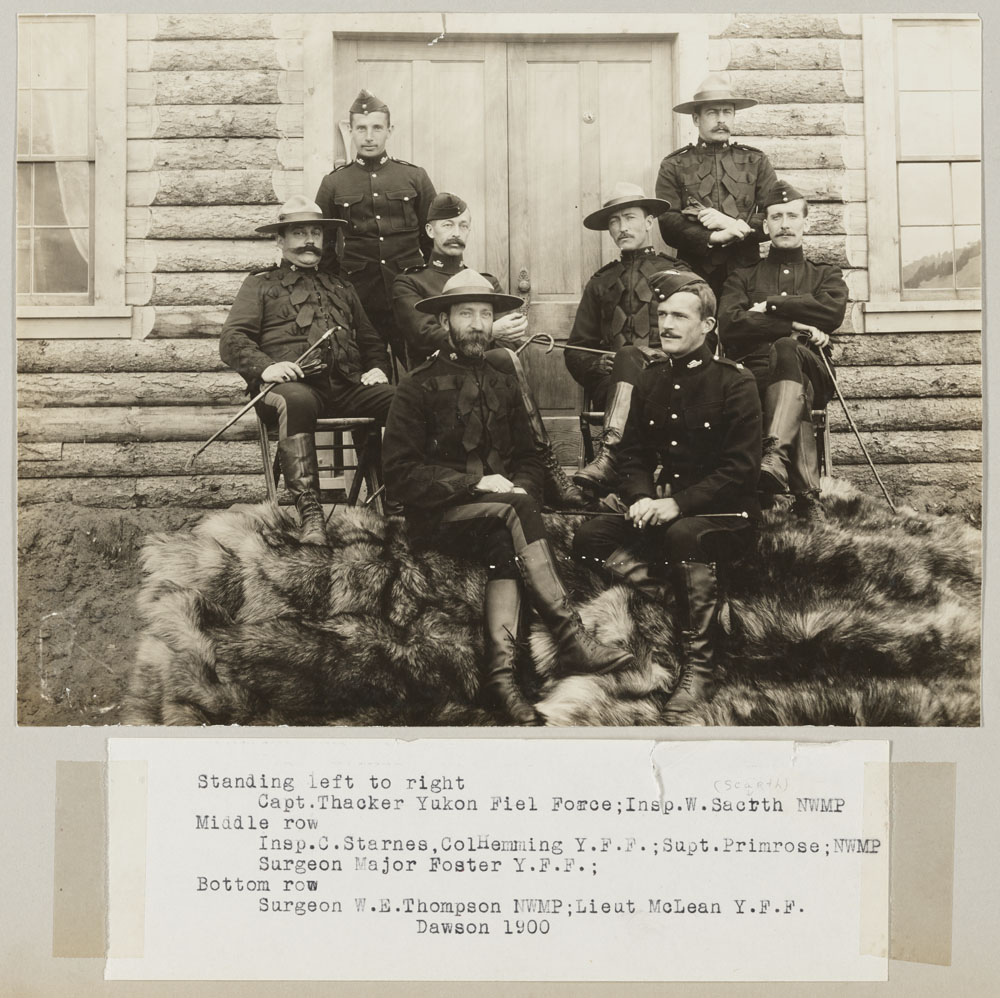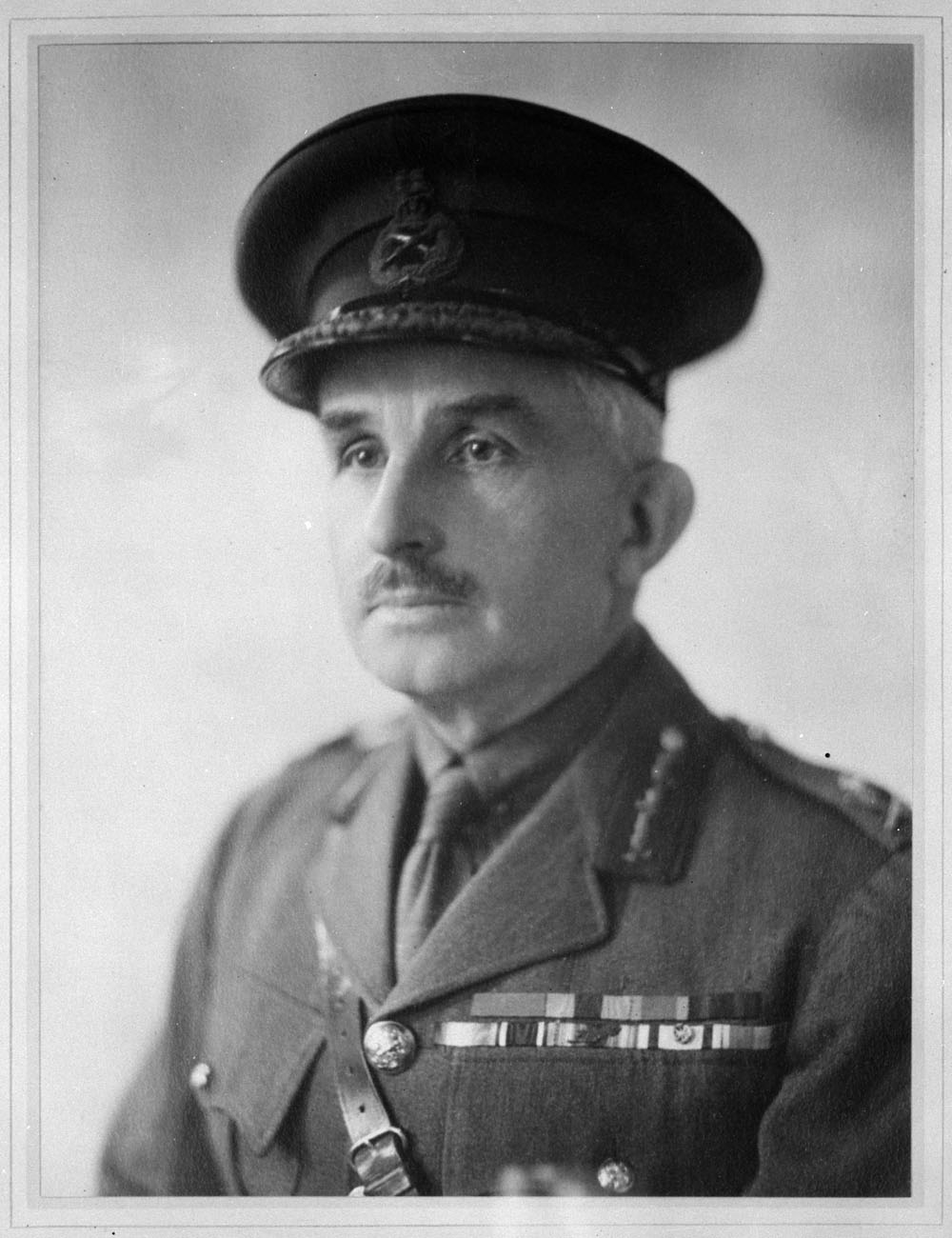Herbert Cyril Thacker, CB, CMG, DSO, artillery officer, military attaché, chief of the general staff 1927–28 (born 16 September 1870 in Poona, India; died 2 June 1953 in Victoria, BC). Thacker was commissioned into the Royal Canadian Artillery in 1891. He fought in the South African War and accompanied the Japanese army as military attaché during the Russo-Japanese War 1904-05, the first appointment of its kind for a Canadian officer. Thacker commanded two divisional artilleries in the Canadian Expeditionary Force, 1915–19.

Early Life and Education
Herbert Cyril Thacker was born in Poona, India, to Major-General John Thacker of the Bombay Staff Corps. Although born in India, he attended Upper Canada College in Toronto, and then the Royal Military College of Canada (RMC) in Kingston. Thacker graduated from RMC in 1887 and was commissioned into the Royal Canadian Artillery in 1891. Thacker was involved in survey work in western Canada for the Canadian Pacific Railway in the early 1890s and served in the Yukon Field Force from May 1898 to August 1900 during the Klondike Gold Rush.
South African War
Herbert Cyril Thacker served in the South African War as a captain in the Canadian Field Artillery. The conflict (also known as the Boer War) was Canada's first foreign war. Canada sent four contingents to South Africa, while some Canadians also served in British units. Canadians also served in Strathcona’s Horse, a mounted regiment recruited and paid for by Scottish-Canadian Lord Strathcona. For his service, Thacker was awarded the Queen’s South Africa Medal with three clasps: Cape Colony, Orange Free State and Transvaal.
Russo-Japanese War
In December 1903, Herbert Cyril Thacker completed a British Army gunnery staff course in England. The following year, he became the first Canadian defence attaché. Thacker was assigned by Lord Dundonald, then the General Officer Commanding the Canadian Militia, to accompany a group of British military observers to Japan and report on the Russo-Japanese war in 1904. He had two missions: to assist the Japanese and observe their forces in battle. Given the many developments in warfare in the latter half of the 19th century, British and Canadian military staff expected to learn from this conflict between two industrialized countries. Of greatest interest was how recent developments in artillery were manifested on the battlefield. It is for this reason that Lord Dundonald selected an artillery officer for the task.
Thacker was given lists of questions from various departments in the Canadian militia besides artillery, including queries about musketry, military engineering and medical services. He was dispatched from the Quebec Citadel to Japan and arrived in Tokyo at the end of March 1904. Thacker and his group of observers expected to be taken to the front lines but were held in Tokyo until late July. In the meantime, he collected information about the mobilization, transportation of troops and supplies around the capital city.
In August, Thacker and his group arrived at the front. He was present for the battles of Liaoyang and Shaho in the summer and fall of 1904, where he saw the realities of modern warfare firsthand. He submitted many reports to Ottawa from the field, before he was forced to leave for medical reasons in October 1904 and returned home to Canada. He submitted his final report in March 1905. Thacker received the Order of the Sacred Treasure (4th Class) and the Japanese War Medal for his service in Japan.

First World War
In 1907, Herbert Cyril Thacker was promoted lieutenant-colonel and appointed Director of Artillery at militia headquarters in Ottawa. He was appointed Commanding Officer of the Royal Canadian Garrison Artillery and Inspector of Coast Defense Artillery at Halifax, Nova Scotia, in 1911. When 1st Canadian Division was formed at the start of the First World War, Thacker was promoted to temporary brigadier general. He commanded 2nd Canadian Divisional Artillery in 1915 and 1st Canadian Divisional Artillery from September 1915 to the end of the war. During the conflict he received the Distinguished Service Order was made a Companion of the Order of St Michael and St George and a Companion of the Order of Bath. He also received seven mentions in dispatches throughout the war.

Postwar
After the First World War, Herbert Cyril Thacker was appointed commander of Military District No. 6, which consisted of Nova Scotia, New Brunswick and Prince Edward Island, with headquarters in Halifax. He was then promoted to major-general in May 1921. Shortly before his retirement from military service, he served as chief of the general staff (1 June 1927 to 31 December 1928), a position he accepted reluctantly and despite ill health. Thacker died in 1953 in Victoria, British Columbia.
Honours and Awards
- Companion of the Order of Bath (1919)
- Companion of the Order of St Michael and St George (1916)
- Distinguished Service Order (1918)
- Queen’s South African Medal (ca.1902)
- 1914-15 Star (ca.1918)
- British War Medal (ca.1919)
- Victory Medal (ca.1919)
- Mentioned in Dispatches (seven times): 1916 (1), 1917 (2), 1918 (3) and 1919 (1)
- Order of the Sacred Treasure Fourth Class (Japan) (1905)
- Japanese War Medal (Japan) (1905)


 Share on Facebook
Share on Facebook Share on X
Share on X Share by Email
Share by Email Share on Google Classroom
Share on Google Classroom






